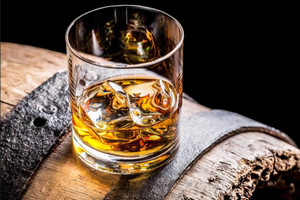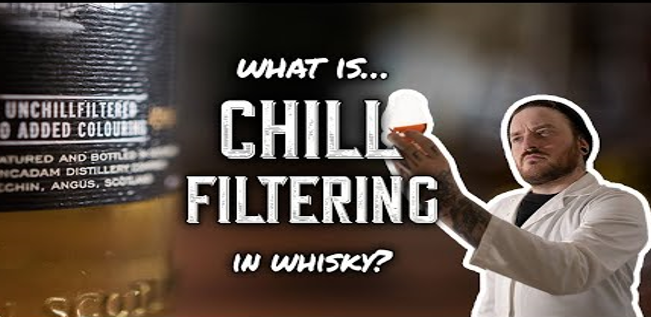Introduction to Scottish Whisky
Posted by EWWines on 26th Jan 2024
Scotch whisky, a spirit steeped in history and tradition which has captivated the palates of the world. In this blog post, we will embark on a journey through the realms of Scotch whisky, unravel some of its rich tapestry from the distinct regions to some of the fascinating processes which define its character.
Regions of Scottish Whisky
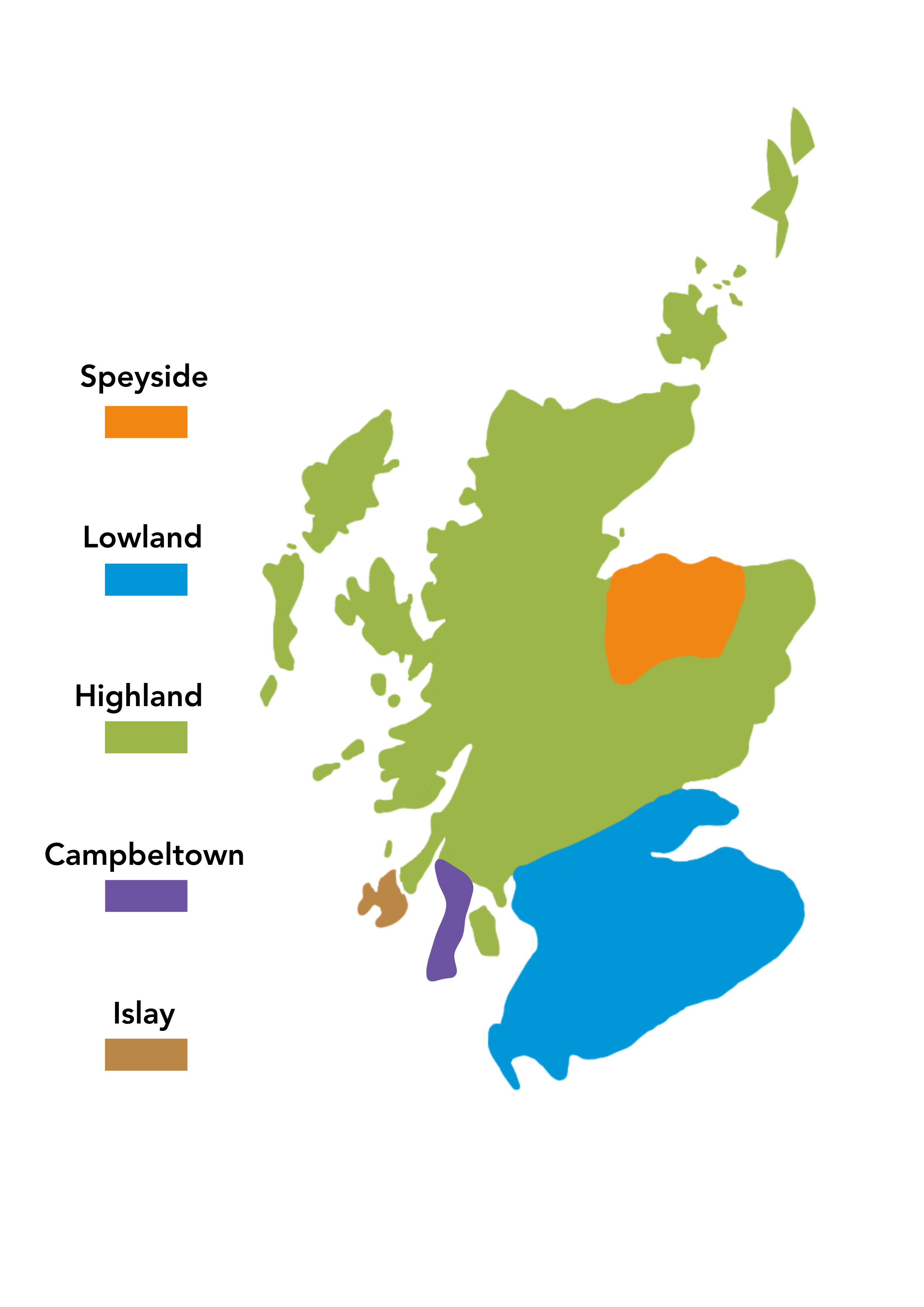
As you can see from the Scottish Whisky Association’s map the five regions are the Highlands, Speyside, Campbeltown, Islay, and Lowlands, each influencing the spirit in a distinct way and adding unique flavour profiles. From the peaty shores of Islay to the heather of the highlands, very much like wine if one understands the geography, one can find an added appreciation for the diversity of Scotch whisky. The flavour of the whisky therefore tends to reflect the unique characteristics of the distillery’s location and their production methods, ranging from the length of the fermentation process to the shape of the still and how the whisky was matured. Now for a quick whistle stop tour of the regions:
Highlands, the largest and most diverse region, also taking on most of the islands therefore offering something for every palate from lighter flavour sippers to salty coastal malts. From the Isle of Skye, Torabheig Distillery are a young distillery making waves and fantastic young whiskies. A brilliant Highland Whisky in our range to highlight is Ardmore 2008 10 Year Old Vintage Casks #25 from Mossburn. This Ardmore single malt was distilled back in 2008, before it was whacked into a cask for the ensuing decade. Finally, in April 2019 the whisky was independently bottled by Mossburn at 46% for the Vintage Casks series, without colouring or chill filtration.
Speyside, the most densly populated whisky region of the world; home to more that 50 distilleries! Famous for its highly sought after collectable drams and of course the River Spey. Speyside’s are typically full of fruit and frugal on their peat. With pear, apple, honey, vanilla and sweet spices from sherry cask finish common. We stock the multi award winning Glenfarclas Single Highland Malt range. Our favourite is the Glenfarclas 15 Year Old Highland Whisky Gift Set, which comes with two free miniatures of Glenfarclas 105 and Glenfarclas 25-year-old, giving you the chance to experience two very special whiskies! The sherry cask finish of the 15-year-old offers an incredible dried fruit character and is dangerously drinkable.
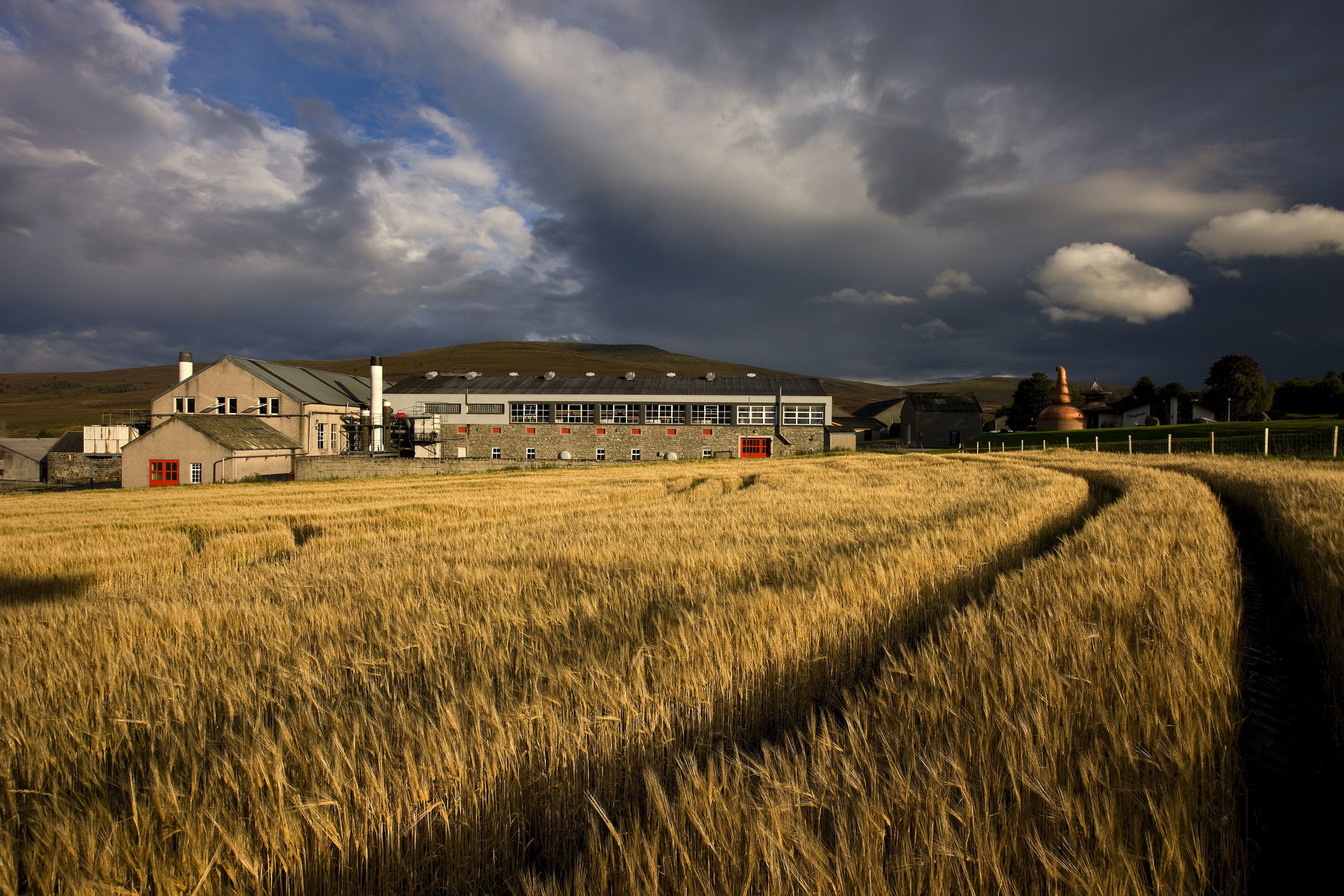
Campbeltown, on the West coast are often full of flavour described as robust and rich in character with smoke, peat, toffee, hints of salt, dried fruit, honey and vanilla dominate on this peninsula.
Islay (‘eye-luuh!’), the West Coast Island famed for its heavily peat influenced fiery whiskies and mosquito's! We have several Islay whiskies to choose from and we particularly love Vintage Malt Whisky Co., Ileach Single Islay Malt which is a “secret malt” from one of the 8 distillers on the island and offers incredible value and is a delicious dram indeed.
Finally, the Lowland region, offers a lighter style, perfect pre dinner sippers! With notes of grass, honeysuckle, cream, ginger, toffee and toast common. Try the North British Distillery bottled by Mossburn 2003 15 Year Old Vintage Casks release #24 Mossburn for a delicious treat.
Blended and Single Malt Whisky
Before delving further into the world of whisky, it is essential to understand the fundamental difference between blended and single malt Scotch whiskies. Blended whiskies crafted by master blenders, combine malt and grain whiskies from different distilleries. They also often showcase a balance of flavour and can be complex and wonderful. For this reason, they are enjoyed all over the world. Around 90% of all Scotch production is in this style.
On the other hand, a single malt whisky originates from a single distillery and offer a more focused expression of the distiller with more control. The official Scotch Whisky definition is; ” Single malt whisky is made from 100% malted barley which is distilled at a single distillery in pot stills and then aged in oak barrels for a minimum of three years”.
Single Malts can only use a malted barley. Blends can include corn, rye and wheat. Single hail from one distillery. Blends combine whisky from multiple sources. One is singular, one is multiple... that is not quite correct! That is because a single malt is also blended! Almost every single malt is a marriage of several whiskies, carefully blended. All 100% malted barley, all from the same distillery. But taken from multiple barrels and whiskies blended to balance flavours and for a consistent style. Single malt comes from a single distillery but is not necessarily a single batch or barrel.
Peated and non-Peated
Peat, decomposed vegetation prevalent in some Scottish landscapes, plays a key role in some whisky production. Peated whiskies, such as those from Islay, carry a robust smoky character which is a result of the malted barley being dried over burning peat fires (due to the lack of trees on the exposed areas of the island). On the flip side, non-peated whiskies showcase more delicate fruity and floral characters. Whether you prefer fruit or fire is as personal as the whiskies themselves.
A great place to understand this is with Berry Brothers & Rudd’s Blended Malt Scotch Whiskies. The Classic range we list are not only fantastic value, but will allow you to explore a fruity and floral Speyside blend without peat and the sherry cask matured blended malt with its smoky notes from the peat influence which combines beautifully with the dried fruit and caramel notes from the Sherry Butts.
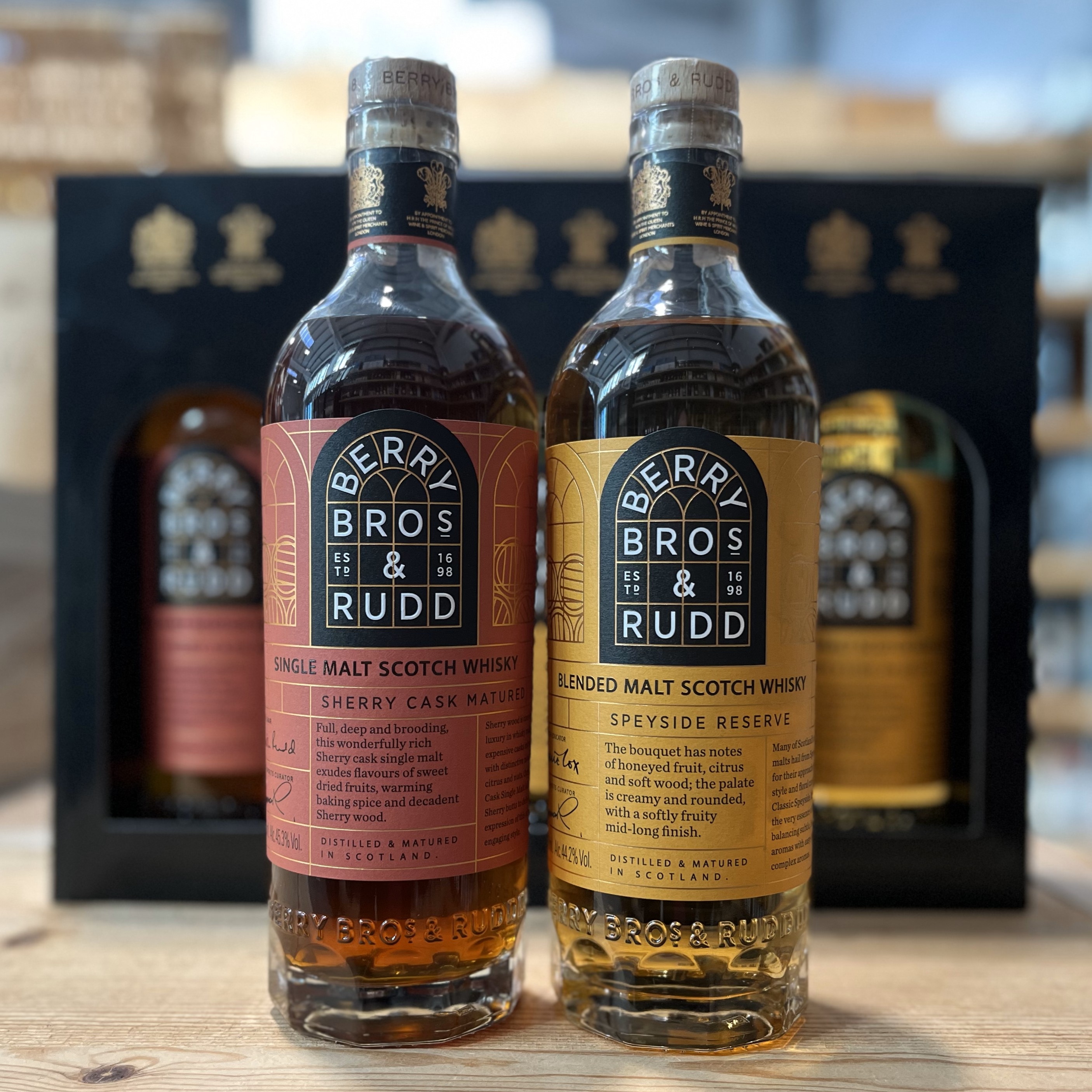
Chill Filtered and Non-Chill Filtered
The debate around chill filtration adds another layer of intrigue to the world of Scotch which we will touch upon in our introductory guide in this blog. Chill filtration is a process to remove sediment and proteins which prevents cloudiness in the bottle. As the name suggests the spirit is chilled and passed through a filter to remove these particles. Non-chill filtered whisky therefore has not been through this process. Chill filtration can be argued to strip flavour and texture while others appreciate the clarity it imparts. Variety is the spice of life, and we think that it is important to experience this choice and see how the process influences your tasting experience.
This short youtube video is from the whisky diary explains more about chill filtration.
Whisky and Food Pairings
To elevate your tasting experience further, consider exploring whisky and food pairing. Unlock the successful pairings and discover the delights where whisky meets food for yourself. Understanding the interplay of flavours will enhance both your culinary experience and whisky enjoyment.
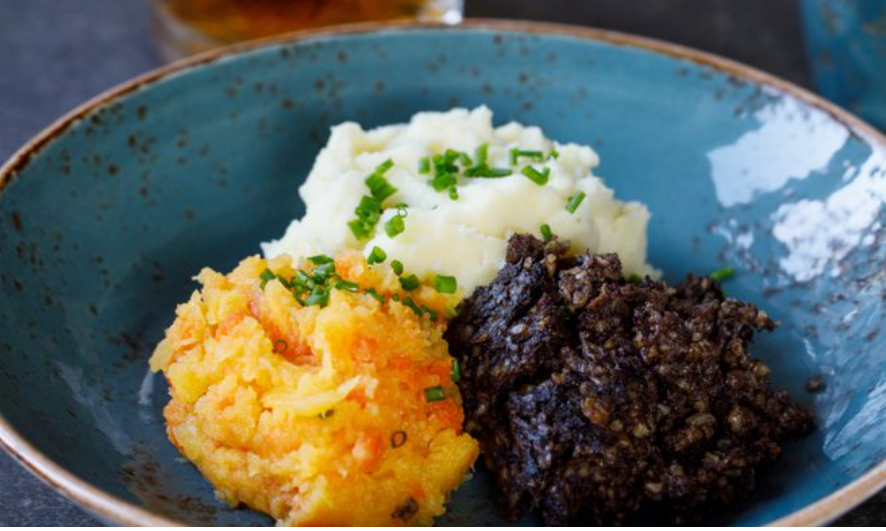
From Getty Images Stock
We will give you a few of our favourite pairings to ignite inspiration and help begin your journey. Remember discovering culinary pairings is a delight best explored with good friends so invite some friends over and brighten up a wintery evening together.
The rich smoky notes of Torabhaig Legacy 2 Allt Gleann perfectly complement oak smoked salmon, charred Padron peppers or even blue cheese.
The richness, dried fruit / fruitcake and caramel undertones of a top Speyside dram matured in Sherry butts such as Glenfarclas 15 year old perfectly compliment haggis if you are celebrating Burns night or by contrast, a dessert such as a chocolate delice or a rich sticky toffee pudding is heavenly together.
We encourage you to explore the wonderful world of Scotch Whisky as widely as possible! If you would like to find out more, then a great place to start while you sip your drams is the Scottish Whisky Association.
Slàinte Mhath!

